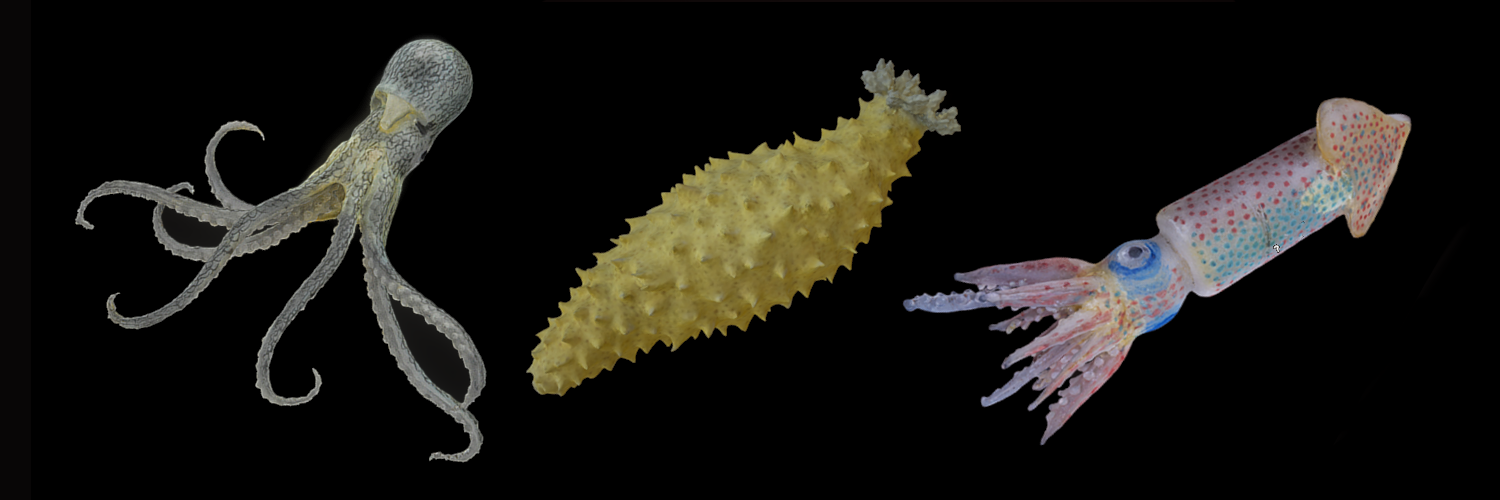This post is by Sketchfab user Peter Fried, published by the Community Team.
Some of the most beautiful “Archival 3D Images” anywhere were made over one hundred years ago by the father-and-son team of glassblowers Rudolf and Leopold Blaschka. Using their own observations and biological drawings of others, they made glass figures showing hundreds of different exotic marine invertebrates, such as those shown above. Collections of these delicate figures are at over 50 museums and universities, with the major ones at Cornell, the Harvard Museum of Comparative Zoology, the Corning Glass Museum and the University of Dublin.
Today these exquisite glass figures are a benchmark and a challenge for archival 3D-capture and 3D printing technologies. My name is Peter Fried and my project, ARC-3D, is capturing these figures in 3D models. Several years ago I read about and saw some on display at Cornell. As a photographer and an engineer developing underwater technology, I was fascinated by their history and their beauty and intrigued by the challenge of capturing them in 3D.
At Cornell I have been working with Professor Drew Harvell, curator of the Blaschka collection and David Brown, photographer at the Johnson Museum. The first model we made was of a small cephalopod, or squid from that collection. David made the photographs in Ithaca, and sent them to me for the processing. Although David is an accomplished photographer, who has produced a film and photographed a book about the Blaschkas, such a “remote” arrangement is definitely not recommended. We both were doing this for the first time, experimented with many arrangements of pictures and eventually made over 1000 pictures of this 2.5-inch glass figure. The final photogrammetry (~ 300 photographs) was done with Agisoft Photoscan and some “touch-up” processing was done in Blender. Learning Blender is a challenge, but Taylor Shields at NYU’s LaGuardia Studios has been an excellent teacher.
I have also made models of several Blaschkas at Harvard’s Museum of Comparative Zoology where Professor James Hanken is the director and Jon Woodward the curator for the Blaschka figures.
The workflow starts with the glass originals on a turntable in a light tent to soften the light and minimize shadows. Several orientations on the turntable are used to get all the angles and to yield a set of photos that will align well. Off-board targets are used on the turntable to add alignment precision, which is critical for capturing details such as thin fins. In addition, to eliminate specular reflections (glare) from the shiny glass models, polarizers are used on all the lights and also on the lens of the camera. The photos, usually 4-5 rotations of 40-70 photographs each, are then masked and processed with Photoscan.
Last year I set up a Sketchfab profile, ARC-3D, for these models. With its Cultural Heritage community, the site made it possible to network with others doing similar work and to exchange best-practices.
Although scanning was our key objective, Professor Hod Lipson and Joni Mici of the Creative Machines Lab at Columbia have also been printing several of the figures. Shown below are the 3D model and two photos of an octopus (missing one arm) from the Harvard collection. On the left is the glass original and on the right a photo of a print made on the Stratasys J750 at Columbia.
The rendering of the overall shape, most of the details and the texture in the Sketchfab model and the print are excellent. Areas that require more work are the crisp definition of translucent sections (e.g. the suckers on the arms) and surface treatment (The 3D print was coated with Crystal Clear to give it some of the gloss of the glass.).
Quite obviously, our project has begun with the “easier” (more opaque, less intricate) of the Blaschka models. Some of the more-challenging models are shown at the beginning of this article. To capture such models, technologies we are using going forward include CT scanners and structured light scanners such as the Artec Space Spider as well as image-capture using voxel-based models vice the traditional mesh-based models. Our objective is find the hardware, software and workflows necessary to widen the set of subjects that we can faithfully capture in archival 3D.
Thanks Peter! Be sure to check out the other models on his Sketchfab profile.



